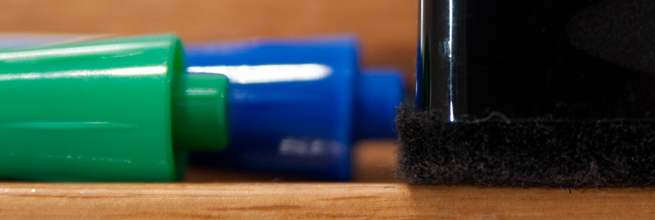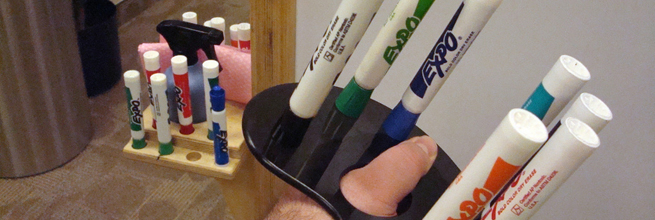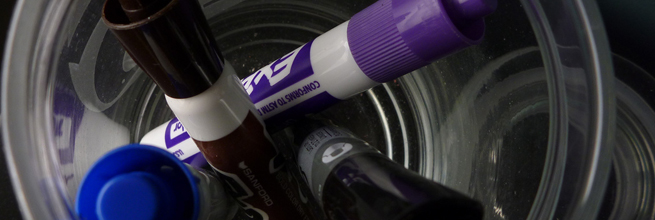 When I took a promotion to Project Manager for the in-house design team at my employer just over a year ago, I hadn't just been upgraded in status and salary, I had cashed in my time sitting at the front desk and migrated to the back of the office where all the design magic happens. Gone were the days of buzzing people in and being mistaken for a receptionist, the days moving forward would be sitting amongst the big kids in a space whose walls were plastered with band posters and found printed pieces that made us all go "ooooh, that's sexy."
When I took a promotion to Project Manager for the in-house design team at my employer just over a year ago, I hadn't just been upgraded in status and salary, I had cashed in my time sitting at the front desk and migrated to the back of the office where all the design magic happens. Gone were the days of buzzing people in and being mistaken for a receptionist, the days moving forward would be sitting amongst the big kids in a space whose walls were plastered with band posters and found printed pieces that made us all go "ooooh, that's sexy."
But with great power comes great responsibility, and managing design work for 15 departments within two conjoined, fast-paced, staff-strapped nonprofit organizations meant that my level of organization and my workflow had to be upgraded as well. Furiously scribbled notepads, Post-It Notes stuck all over the place, and all manner of emails flying back and forth made for a pretty chaotic environment. So the first piece of office equipment I ordered? A white board. 1,728 square inches of dry-erase glory.
The Writing's on the Wall
There's something pleasant about writing with markers on a wall, isn't there? One part graffiti, one part sketch book, and one part doodle pad, the white board is a blank canvas begging to be drawn on again and again. Larger than life ideas require larger than life treatment, and seeing concepts and thought processes writ large has a magical way of instilling confidence that I'm in control of my tasks and ideas.
Getting your thoughts out there on the board is easy and free flowing. There are no restrictions to what you write like there are on paper. The dry erase surface greases up your brain and lets the thoughts ease out. There's hardly any friction as you write, and the fear of holding back the bad ideas is gone—all you need to do is wipe them away off the board and replace them with better ideas, so why not get them all out there?
The simple act of writing it out is hugely beneficial in our digital world. It validates what's in your brain by getting it out and making it real, while simultaneously allowing your brain to move onto the next thought instead of holding on to the last one.
Creation and Erasure
Add in the ability to color-code, layer, and categorize and you have a tool that makes order out of brainstorming chaos. There's a strange sense of accomplishment when I've been able to successfully harness a conversation into bullet points, tables, and notes on the board, especially when I get to cram every possible white space with ideas.
The impermanence only adds to the fun. Surveying a completed white-boarding session helps anchor the big picture into your brain, and I've taken to snapping photos of white boards after meetings to capture notes of what was discussed. Erasing an entire board at the end of the session completes the cycle and leaves you confident that you can move onto the next task.
I've turned into such a white board fiend that we recently bought one for our home office, another 1,728 square inches of glossy white canvas that I can't help but use for everything from a running list of blog post ideas to weekend to-do lists to website design sketches and new features to explore for app development. White boards have proven to be the perfect tool to harness my chaotic creativity and pull it into something digestable and semi-permanent.

